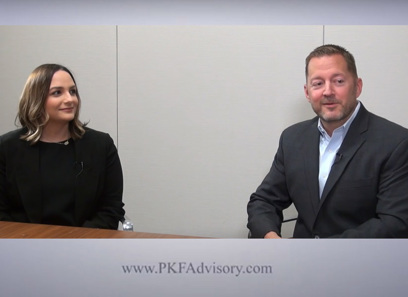M&A Outlook: Why Economic Factors Are Crucial for Understanding Mergers and Acquisitions
M&A Outlook: Why Economic Factors Are Crucial for Understanding Mergers and Acquisitions
Blog Article
The Impact of Mergers and Acquisitions on Market Characteristics and Competition
The landscape of procurements and mergers provides an intricate interplay between cultivating development and potentially weakening affordable integrity within markets. As business seek strategic positionings to boost efficiency and development, the implications on customer choice and market prices warrant mindful scrutiny. While the benefits of such loan consolidations can be evident, the darker ramifications usually arise, raising vital inquiries concerning market power and the regulatory frameworks developed to preserve balance. This conversation welcomes an expedition of the nuances involved, revealing how these business maneuvers reshape the extremely structures of competitors.
Summary of Mergers and Acquisitions
Mergers and purchases (M&A) play a critical role in shaping the landscape of modern-day organization, as business seek to improve their affordable side and achieve calculated purposes. M&A deals entail the consolidation of firms or possessions with various monetary transactions, consisting of mergings, where two firms incorporate to create a new entity, and acquisitions, where one firm acquisitions one more outright. These tasks are driven by a myriad of aspects, such as the quest of synergies, diversity of item offerings, and the wish to enter brand-new markets.
The M&A process typically entails a number of stages, consisting of critical planning, due diligence, settlement, and integration (Emerging Market Opportunities). Firms carry out thorough evaluations to identify possible targets that align with their growth methods and evaluate the economic and operational effects of a transaction. Governing considerations likewise play a vital role, as antitrust regulations are designed to stop monopolistic practices that might damage competition
As companies browse the complexities of M&A, the results can significantly affect stakeholders, consisting of customers, workers, and investors. Consequently, comprehending the characteristics of M&A is essential for assessing their ramifications within the more comprehensive context of market actions and competitive positioning.
Positive Effects on Market Dynamics
The consolidation of firms via acquisitions and mergings can lead to substantial favorable results on market characteristics. This effectiveness can equate into lower prices for consumers, promoting a more competitive market setting.

In addition, raised market share arising from mergings can supply companies with higher negotiating power with vendors and suppliers, helping with improved conditions that can profit the total supply chain.
Unfavorable Repercussions for Competition

Furthermore, the elimination of competitors with procurements can stifle innovation. When essential players merge, smaller sized companies might have a hard time to contend, causing a homogenization of product or services. The resultant absence of competitors can produce an atmosphere where remaining companies have much less motivation to he said purchase research and advancement.
Additionally, mergers can develop obstacles to entrance for new companies, as the joined entity may look here leverage its enhanced sources to dominate the market. This can prevent prospective entrants, thus restricting competitors and development in the long-term.
Inevitably, while mergings and purchases can offer critical advantages, their potential to weaken competitors requires cautious consideration of their wider ramifications on the market dynamics. The equilibrium in between growth and competitive stability continues to be a critical worry in assessing such company methods.
Regulatory Factors To Consider and Oversight
Regulatory structures play an essential duty fit the landscape of mergings and acquisitions, making sure that market dynamics stay affordable and fair. These frameworks are made to stop anti-competitive actions and to safeguard customer interests. Regulatory bodies, such as the Federal Trade Compensation (FTC) in the USA and the European Commission in the EU, assess recommended procurements and mergers based look at this site on their potential influence on competitors within the market.
The evaluation procedure entails an extensive examination of the market share, potential for monopolistic methods, and the total financial implications of the transaction. Regulators usually impose conditions or require divestitures to alleviate problems over reduced competition, guaranteeing that the merged entity does not dominate the marketplace unjustly.
This collective method helps to foster a well balanced regulative atmosphere that promotes innovation while guarding affordable methods. Ultimately, reliable governing considerations are crucial in keeping market stability and encouraging healthy and balanced competition in the face of evolving organization landscapes.
Study and Real-World Instances
Often, case researches of significant mergers and procurements show the profound results these transactions can carry market dynamics. The 2000 merging between AOL and Time Detector serves as an archetype, where the prepared for synergies dropped short, resulting in a radical decline in investor worth. This situation underscores just how cultural imbalances and overestimation of market potential can interfere with competition.
On the other hand, the acquisition of WhatsApp by Facebook in 2014 exhibits an effective combination that improved the communication landscape. Emerging Market Opportunities. Facebook leveraged WhatsApp's customer base to improve its solution offerings, effectively boosting its market dominance while preserving competitors in the messaging sector
One more substantial case is the merging of Exxon and Mobil in 1999, which developed one of the world's biggest oil companies. This loan consolidation led to higher performances but increased problems concerning decreased competitors in the power market, motivating regulatory examination.
These instances highlight the intricate interplay in between mergings and acquisitions and market dynamics, showcasing both the potential benefits and mistakes that can occur, eventually shaping competitive landscapes across industries.
Conclusion
Mergers and acquisitions play a pivotal function in forming market characteristics and competition. Effective regulative oversight is crucial to guarantee that the benefits of M&A tasks are made the most of while reducing negative effects on market competition.
One significant issue is the possibility for minimized market competition, as mergers usually lead to the debt consolidation of market power among less players. Regulative bodies, such as the Federal Trade Compensation (FTC) in the United States and the European Commission in the EU, examine recommended purchases and mergings based on their potential effect on competitors within the market.

Mergers and procurements play a crucial function in shaping market dynamics and competition. Reliable regulative oversight is important to ensure that the advantages of M&An activities are made the most of while mitigating adverse impacts on market competitors.
Report this page